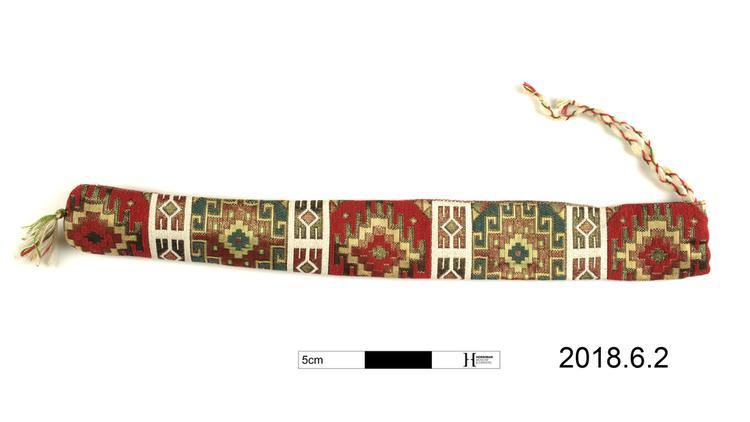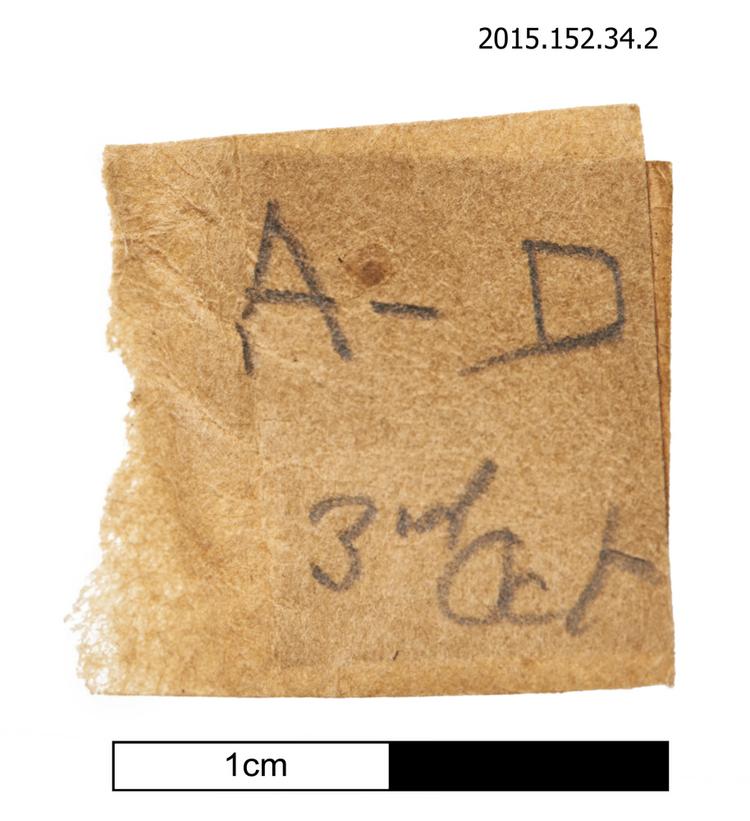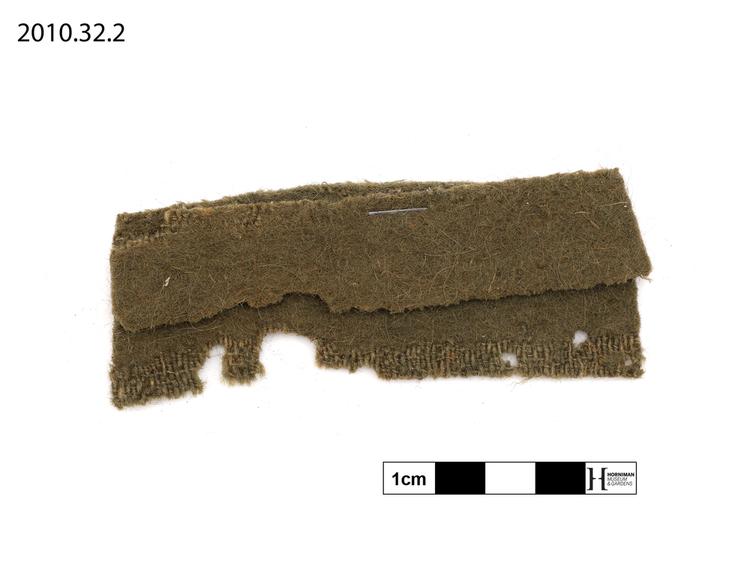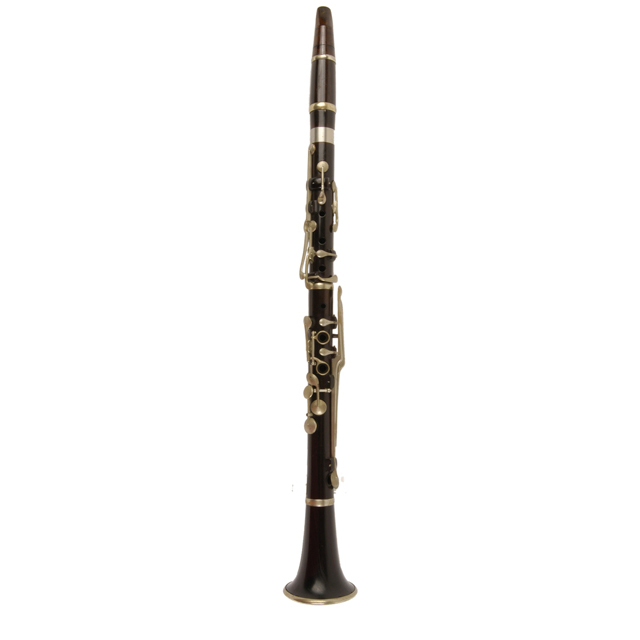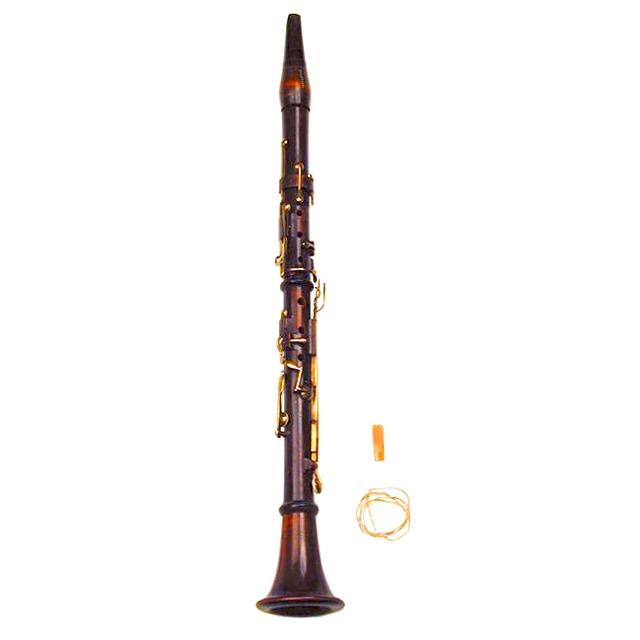
Muller system clarinet in B-flat. Index card by T.K. Dibley 30/4/97 reads: Fruitwood: 2 joints + bell, barrel and mouthpiece: keys brass, saltspoon, in blocks or "trunnions": ferrules horn, conventional profile; thumb rest brass simple, fixed with 2 screws: bell almost continuous, with wide integral wood rim: barrel bulbous: mouthpiece, possibly original, has short table but accepts a ligature. Fingering: L.0. Straight speaker with chimney; thumb-hole (?covered for F natural?); 1. A natural and A flat in same turned ring. F.H.; 2. Finger hole (=F.H.); 3. Cross B flat; F.H.; 4. Duplicate lever opening B flat above; cross G sharp; duplicate lever opening R4's E flat; long C sharp; bascule with extra touch for R1.; R0. Rod in "trunions" opening L4's C sharp; 1. long trill key: side key for ?F sharp (the head seems too high up to give F natural) with touch of trill key curving over it; extra touch on bascule; finger hole; 2. Finger hole; 3. Cross F natural; finger hole; 4. Side F sharp; angled E flat in "trunions"; hinged C natural with brass guide below tone-hole. Inscr. on bell and upper joint: "mark/S.KOCH/WIEN" (the mark is that illustrated in New Langwill). See also detailed description below, by Thomas K. Dibley.
The key system on this clarinet is based on that devised by Iwan Müller in 1809. Müller added a number of keys to the lower part of the instrument to be operated by the right hand. These meant that the tone holes could be wider, giving a warmer sound at louder dynamics. Müller also claimed that his clarinet was 'omnitonic', meaning that it could play in any key. At the time, most clarinettists used at least two different sizes of clarinet, interchanging as the music demanded. Müller's system proved popular in German-speaking countries, and was further developed with the addition of extra keys by makers such as Stephen Koch, who made this instrument. However, the idea of standardising the size of the instrument faced opposition, especially in Paris, where players were keen to retain the range of tone qualities offered by different sized clarinets. But German instrument makers continued to improve the design. In the late 19th century it developed into the Baermann system and then in the early 20th century into the Oehler system, which is the standard clarinet used in German orchestras today.



